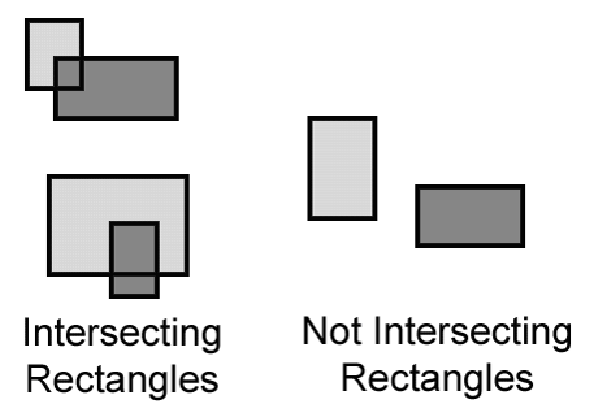Game Development Reference
In-Depth Information
Figure 18-2: Examples of intersecting rectangles (on the left) and rectangles that do not intersect (on the right).
We will make a single function that is passed two
pygame.Rect
objects. The function,
doRectsOverlap()
, will return
True
if they do and
False
if they don't.
There is a very simple rule we can follow to determine if rectangles intersect (that is,
collide). Look at each of the four corners on both rectangles. If at least one of these eight
corners is inside the other rectangle, then we know that the two rectangles have collided.
We will use this fact to determine if
doRectsOverlap()
returns
True
or
False
.
5. for a, b in [(rect1, rect2), (rect2, rect1)]:
6. # Check if a's corners are inside b
7. if ((isPointInsideRect(a.left, a.top, b)) or
8. (isPointInsideRect(a.left, a.bottom, b)) or
9. (isPointInsideRect(a.right, a.top, b)) or
10. (isPointInsideRect(a.right, a.bottom, b))):
11. return True
Above is the code that checks if one rectangle's corners are inside another. Later we will
create a function called
isPointInsideRect()
that returns
True
if the XY
coordinates of the point are inside the rectangle. We call this function for each of the eight
corners, and if any of these calls return
True
, the
or
operators will make the entire
condition
True
.
The parameters for
doRectsOverlap()
are
rect1
and
rect2
. We first want to
check if
rect1
's corners are inside
rect2
and then check if
rect2
's corners are in
rect1
.


